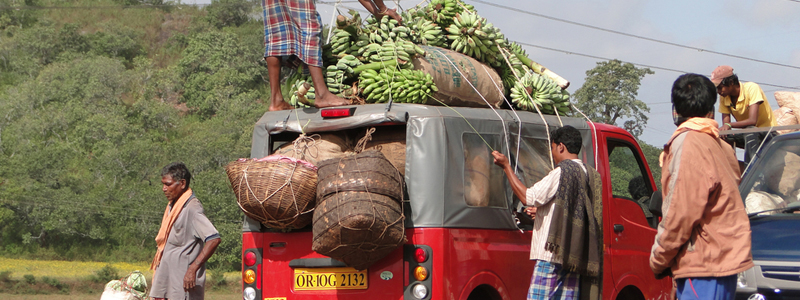
Lack of storage, poor transport facilities plague India’s food exports
Sachin Manawaria | @TheDollarBiz
 Most of the perishable food produce in India is transported through non-reefer mode
Most of the perishable food produce in India is transported through non-reefer modeIndia’s exports of fruits and vegetables have grown in the last three years due to surging demand in Pakistan, Kuwait, Bangladesh, and Sri Lanka. Overall, India’s exports of fruits and vegetables increased to around $1.4 billion in FY2013-14, which is up about 36% from the previous year, according to the Agricultural and Processed Food Products Export Development Authority (APEDA). However, exports could get a significant boost with improvement in storage and transport facilities, say experts. India annually suffers around Rs.550 billion as wastage of fruits and vegetables due to inadequate cold storage, supply chain infrastructure and lack of food processing in agri-sector, according to Dr. Santosh Kumar Sarangi, Chairman and Secretary of APEDA. “Only 2% of fresh fruit and vegetables produced in India, which is their second largest producer in the world are stored in the meagerly available temperature controlled facilities against 85% of the leading economies in the world,” Dr. Sarangi said at recent seminar held by the PHD Chamber of Commerce and Industry in New Delhi. The PHD Chamber expects India’s logistics sector, valued at 13-14% of GDP, to touch $200 billion by 2020. But the sector remains highly fragmented. India currently has 6,300 cold storage facilities with over 3,500 companies in the value chain, but states like Uttar Pradesh and West Bengal account for nearly 65% share of the total capacity. Storage remains skewed at the item level as well. Alok Kumar Sahu, Director, Anurag Sheet Bhandar Pvt. Ltd., told The Dollar Business that over 80% of the India’s cold storage facility is used only to store potatoes. “That’s because of the low risk factor: the shelf life of potato can be enhanced by six months,” he says. Sahu’s cold storage in Bihar has a 99% share of potato and remaining 1% for fruits like apple, orange and grapes. Lack of proper transport is another concern. According to industry estimates, around 104 million tonnes of perishable produce is transported between cities in India annually, of which 100 million tonnes is moved through non-reefer mode. Almost 80% of reefer (refrigerated container) mode is being used by milk and milk products alone. Limited availability of cold storage gives rise to a monopoly in the sector and vulnerable to unilateral price hikes. According to Seafood Exporters Association of India (SEAI), shipping lines operating from Indian coasts sometimes increase freezer container freight rates by up to $1,500 irrespective of the size of the container and port of destination. While the government has allocated Rs.5,000 crore in the FY2014-15 budget towards improving India’s storage capacity, industry representatives say financial assistance and FDI could help. The PHD Chamber says that FDI in organized food retail could help double India’s cold storage capacity to over 61 million tonnes by 2015-16 and minimize agri-produce losses.
This article was published on August 18, 2014.





 to success.
to success.